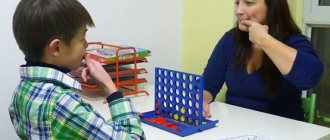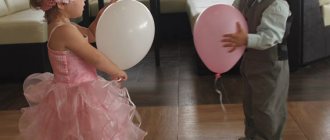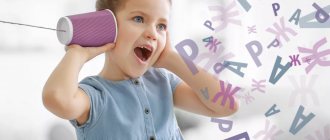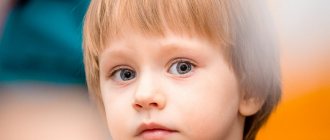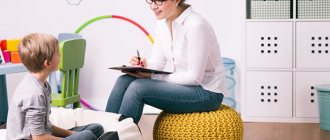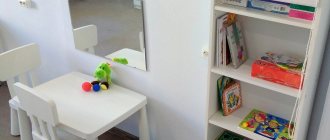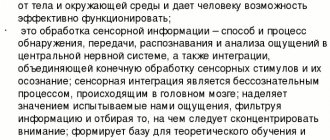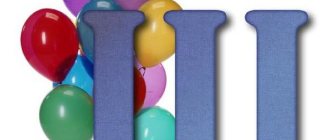The first sounds and words of a little man are quite funny and bring smiles to adults. However, no one will smile if they hear inverted words and incomprehensible phrases from an adult. Communication is an important element of our life. The ability to correctly and competently express one’s thoughts, the ability to clearly formulate answers to questions posed, as well as the ability to pronounce all sounds is something that not only children, but also adults should strive for.
Speech therapy classes for children at home
Speech therapy classes for children at home are constant communication with the child in a playful way. Once your child is interested, you can engage with him by playing games for speech development such as
- finger games (games for developing fine motor skills)
- articulatory gymnastics
- games for hearing development, games for sound vibration and logorhythmics (poems with movements)
- poems for speech development and vocabulary replenishment
The most difficult thing is to interest the child. And this is a very serious task. After all, sitting down a little fidget is not so easy. In general, it is not necessary to sit him down; you can work with the child when he is playing in his hut or jumping on the sofa. Classes should be held in a playful way. Then it will be easier for you, and the child will learn the material without hysterics and whims.
Are you looking for speech therapy classes for children 2 - 3 years old? A selection of the best exercises
A few tips before starting homeschooling with your children:
- classes should initially be short (2-3 minutes). Then we gradually increase them. Maximum 15-20 minutes at a time.
- The child should enjoy the activities. Don’t force or insist, as this can completely discourage your child from wanting to do anything.
- It’s better to practice more often, but little by little. Frequently performing the same exercise, the child develops a skill.
- use laughter during classes. Do not scold for incorrect pronunciation or if the child fails to do something. It’s better to find out with your child why his tongue is so naughty and how to fix it. It is better to be an ally and friend to a child than a strict teacher. Find out how to praise your child correctly here.
Learn more about speech therapy classes for children aged 5 - 7 years.
I would like to dwell in more detail on each of the types of games that you need to play with your child.
LiveInternetLiveInternet
Early age is important for all subsequent mental, physical, speech and emotional development of the child.
The most important reason for the relevance of the problem of early correction of developmental disorders is the fact that in all countries the number of newborns with developmental disabilities and poor health reaches 86% of newborns.
In a situation where a 1.5–2.5 year old child does not have active speech, parents and teachers are faced with the question: is it necessary to immediately begin special speech therapy classes or should it wait? Parents usually compare the child’s speech with the level of speech development of his peers. And, of course, they begin to worry about the fact that the child is lagging behind in speech development. However, at the everyday level, there are ideas that “boys generally start talking later” or “it happens that he is silent, silent, and then speaks,” etc. Often, speech therapists at the clinic advise to wait a little. This can be explained by the fact that classes with children require a special approach; not every specialist has the necessary knowledge, experience, or desire to work with young children. It is much easier to conduct classes with a child 4.5–5 years old, whose behavior is already quite arbitrary. In my opinion, if a child aged 1.5–3 years does not have active speech, it is necessary to organize a consultation with competent specialists - a speech therapist, psychologist, neuropsychiatrist, otolaryngologist (ENT), conduct a series of medical studies (encephalogram and echogram of the brain, audiogram, etc.) . Observations by specialists and objective data from medical studies make it possible to clarify the nature of the disorder and the degree of its complexity, and to suggest possible causes of the disorder. As a result of such an examination, it becomes possible to organize adequate assistance for the child. At an early age, various developmental disorders are not yet differentiated in their external manifestations; they often have similar manifestations. But a violation of speech development to one degree or another accompanies any defect. Organizing observation of the child and corrective classes will help differentiate speech disorders from other disorders (mental retardation, mental retardation, hearing impairment, autism) and make a more accurate diagnosis. Usually, during a consultation with a speech therapist or during speech therapy sessions with young children, parents want to get a prognosis for the child’s speech development in the short and long term. How accurate is it possible to make a forecast? Since in early and early preschool age, in children with speech disorders of varying degrees of complexity, the level of general and speech development may look approximately the same, assumptions about the further development of a child’s speech can only be made by taking into account the dynamics of speech development during speech therapy training. With systematic speech therapy sessions, some children who have similar speech disorders in early and early preschool age can completely overcome their speech defect, catch up with their peers in terms of speech development, and in the future successfully study in a public school. Another part of children, even during systematic training, is unable to completely overcome their speech impairment. At school age, they have problems mastering written language (dysgraphia, dyslexia). In the first case, we can talk about delayed speech development (DSD); in the second case, we can talk about general underdevelopment of speech (GSD).
The main directions of correctional and speech therapy work:
Normalization of muscle tone, fine motor skills, development of the articulatory apparatus, tactile sensations, facial expressions, development of breathing rhythm, stimulation of babbling, babbling words, translation of words from passive to active vocabulary, development of visual, auditory differentiation, memory, attention, thinking.
Features of classes with young children:
Working with young children requires a special approach. Classes with young children differ from classes with preschoolers not only in the volume and content of the material, but also in the specific methods of conducting classes. In order to carry out the work in the best possible way, the speech therapist must also have a good understanding of the psychological characteristics of early childhood: features of the development of perception, attention and memory, speech, thinking, activity, etc.
Therefore, when working with young children, the following points should be taken into account:
1. A child learns about the world with the help of an adult, through imitation. Kids explore with interest the sensory properties of surrounding objects: they open and close, throw, touch, smell, taste. But only with the help of an adult will a child learn the functional purpose of our everyday objects - that they eat soup with a spoon, and dig sand with a spatula, read a book, and draw with a pencil. An adult introduces a child to new games when he teaches how to lull a doll, build with blocks, roll a car by a string, etc. By watching an adult and repeating his movements, actions, words, the child learns new skills, learns to speak, serve himself, and becomes more independent. Classes with children are based on imitation of an adult, his movements, actions and words, and not on explanation, conversation, or suggestion. In the joint activities of a child and an adult, it is necessary to combine elements of play and learning.
2. Young children are active, mobile and inquisitive. Childhood spontaneity underlies knowledge of the world around us and communication with people. Children have not yet formed the concepts of what is good and what is bad, how one can behave and how one cannot, etc. Teaching children is possible only when the child’s positive emotions are affected. Such an emotional uplift can only be achieved in a game. A conscious attitude towards learning will appear later - in older preschool age. In the meantime... if the baby is not interested, he will simply turn away or leave. Elements of learning must be introduced into specially organized games.
3. For a new skill to stick, repetition is necessary. Toddlers love to repeat the same action (or movement, word, etc.) over and over again. This is a learning mechanism: a skill requires a large number of repetitions to become established, and the more complex the skill, the more time and number of repetitions it will take. The assumption that it is necessary to constantly add variety to a child's games and activities is correct for older children. And kids feel more comfortable in a familiar situation and act more confidently during familiar, favorite games. In order for new knowledge, skills and abilities to be consolidated, it is necessary to repeat what has been learned many times.
4. The content of the material must correspond to children's experience. Material for games with young children must be selected in such a way that its content corresponds to children's experience. Use situations familiar to the baby. For example, playing with a car - children saw cars on the street; game "Kitty, kitty - scat!" – the children saw and stroked the cat. If new material is offered, then it is first necessary to give the child new ideas. For example, the game “Hen and Chicks”. Small city children often have no real idea about poultry, so show your child toys - hen and chicks - or pictures, talk a little about these poultry, and then start playing. The main topics of the classes are human life, animals and birds, plants, seasonal changes and weather, etc. The same topics are consolidated, clarified, and expanded in different classes. Reusing familiar stories when working with young children is completely justified and useful. The content of the material for classes with children requires serious and thoughtful selection (you can take the section of the kindergarten program “Acquaintance with the World Around You” as a basis).
5. It is necessary to control the level of complexity of the proposed material. The level of complexity of the material for classes with young children must be age-appropriate. Experience shows the following trend: teachers tend to overestimate the level of complexity of the material and the demands placed on children. This can be explained by the fact that it is very difficult for an adult to take the position of a small child. But what is obvious and simple for an older child, and even more so for an adult, poses a serious challenge for children. It should also be remembered that if a child is faced with a task that is beyond his strength, he will obviously find himself in a situation of failure. The kid will try to complete the task, but he will not succeed, and he will quickly lose interest. In this case, both the child and the adult will be disappointed, and next time the child may give up trying to complete a difficult task. The material should be accessible to a small child; the complexity of the same task occurs gradually, from lesson to lesson (implementation of the principle “from simple to complex”).
6. It is necessary to control the duration of the game. It should be taken into account that the attention of young children is involuntary and short-lived. Therefore, it is necessary to plan the game in advance in such a way as to avoid overtiring the child and losing interest in the activity. Each game lasts from 5–10 to 15–20 minutes. In this case, you should take into account the specific situation and behavior of the children: you can quickly end the game if you see that the children are tired, or continue and expand it if the kids have the mood and strength to continue. Long games should not be planned in classes with young children. Also, during the lesson, it is necessary to flexibly vary the duration of the games, depending on the situation, the children’s capabilities and their behavior.
7. A clear structure of the game is needed. In order for children to better assimilate information, a clear structure is necessary: each game has a beginning, a continuation and an end. Moreover, the beginning and end of the game are very short in time (introductory and final remarks by the teacher). The continuation of the game includes the main content of the proposed material. By varying the duration of the game, we manipulate precisely this part of the game. For both the short and long versions of the game, do not forget about the opening and closing cues to mark the beginning and end of each game. Consider as an example the game “Hen and Chicks” already mentioned above. Options for starting the game - “Here the hen and the chickens have come to us,” or “Now we will play “The Hen and the Chicks,” etc. Options for ending the game – “The hen and the chickens have gone home” (the hen and the chickens are leaving), “The hen and the chickens say goodbye - goodbye!“, etc. But the continuation can be of any content and duration, depending on the tasks assigned. The game must have a beginning, a continuation and an end.
8. A change in activities is necessary. Changing types of activities, when the game consists of several different games, allows you to retain the attention of children longer, increasing the duration and effectiveness of the lesson. It is important that active games are combined with calm ones. By the way, changing types of activities (for example, mental and physical) helps to increase performance in both older children and adults. Each game should include several diverse games, replacing one another.
9.Flexibility. The games described should be selected and used taking into account the age of the children, their abilities and interests. React sensitively to the attitude of children, catch their responses. In some cases, you should learn from the children themselves, who offer interesting options for the development of the game and its plot. It is necessary to combine clear planning of the game with flexibility in its implementation - individual parts of the game can be shortened or expanded, something can be postponed until next time, or a new, previously unplanned element can be introduced.
10. Transfer of knowledge. It is necessary to take special care to ensure that the knowledge and skills that children acquire during games are actively used by them both in other classes and in everyday life. To do this, you need to keep your loved ones informed of events - they should know about the child’s new achievements. Since kids are sometimes lazy, sometimes shy, and sometimes simply forget about what they have learned and act in the usual way in a familiar situation, encourage, encourage, and sometimes demand that the child act in a new way. Only in this case will a useful skill be consolidated faster. In order for skills and knowledge to be consolidated, it is necessary to constantly use them in a variety of situations.
11. Kids need a positive assessment of their activities. During the learning period, emotional support from an adult and a positive assessment of achievements are necessary for children. Therefore, try to celebrate any, even the most modest, achievements and successes. If you fail, don't focus on it. Say, for example: “Then we’ll try again,” “Next time it will definitely work,” “You tried, well done!” To help kids develop faster and more confidently, praise them more often.
The main form of influence on a small child is organized games , in which the leading role belongs to adults. They can be used under the conditions of any program material and conducted in classes by both a speech therapist (individual and group) and a teacher, and also included in music classes.
The education of young children is unique. Its essence lies in the fact that, firstly, children lack not only the motive for learning activities aimed at acquiring certain knowledge, but also the conscious, voluntary actions necessary for learning - the assimilation of first knowledge and skills occurs on the basis of involuntary memorization. Secondly, in spite of everything, a young child has a high level of learning ability. Activities with children of this age are playful in nature, but they have certain goals, objectives, and means of achieving them.
One of the main objectives of teaching is the development of passive and active speech in children.
Through speech, an adult introduces children to the objective world around them. However, children are not always able to independently perceive and process information coming from adults, which indicates the need to develop an understanding of speech and cognitive activity of the child as a whole. Work on the development of speech in young children is organized in stages. The stages are identified on the basis of the psychological principle of development. Speech proficiency is subject to certain patterns and is closely related to the development of other mental functions of the child.
Teaching children at different age stages.
Children of the first year of life. Aimed at developing emotional communication (inducing and maintaining vocal reactions) and understanding spoken speech. One of the main tasks of raising babies is to develop their need for communication. The need for communication arises very early, towards the end of the first month of life. A “revival complex” appears in response to an adult’s smile. Children should first develop their visual and auditory concentration, and then their attention to and understanding of adult speech. This is carried out in the process of the child’s cognition of objects and phenomena of the surrounding reality. The formation of speech and cognitive processes occurs simultaneously. In speech therapy classes, toys or real objects are used first, and then pictures. The direct active participation of the child himself in the process of learning a particular subject is also of great importance. To do this, the child’s actions with it are included in the process of becoming familiar with the object. The child must see the object and at the same time hear its name, touch it and perform various actions with it. The more the child comes into contact with an object, the more successfully his reaction to the word denoting this object will develop, i.e. The development of understanding adult speech will accelerate. An object must stand in the same place for some time and be denoted by the same word. For example, a rubber cockerel is initially called the word “Petya”. As the child masters the word, he learns to relate it to an object that changes its location. By the end of the first year of life, the child begins to speak his first words, and further development involves the improvement of passive and active speech.
Games:
1. “Where does the toy sound?” Goal: To form the visual and auditory perception of children during play activities. Develop understanding of basic instructions. Benefit: rattle. Progress of the lesson: The speech therapist shows the child a rattle, then knocks on it with his hand. Moving around the playpen and continuing to knock on the rattle, the speech therapist ensures that the baby follows the moving source of sound.
The game is played similarly with other sounding toys: a bell, a tambourine, a squeaking toy.
2. “Ladushki” Purpose: To expand the passive vocabulary in the process of performing game actions. Progress of the lesson: 2-3 children sit in the playpen or at the table. The speech therapist claps his hands, singing: “Okay, okay,” and tries to attract the children’s attention to the movements of his hands. Addressing one of the children, the speech therapist says: “Sasha, make it okay.” He takes the child’s hands and claps them, continuing to chant: “Okay, okay.” The adult does the same thing 2-3 times with each child. Then the speech therapist teaches the children to perform “Ladushki” by imitation.
Children of the second year of life. In the second year of study, speech therapy classes primarily develop speech-based communication. The formation of active speech should occur in close connection with the development of thinking on the same cognitive material. The principle of the unity of the formation of speech and thinking on the same cognitive material should be the basis of the entire process of teaching children speech. Along with the development of active speech, children continue to develop attention to addressed speech and its understanding.
The expansion of children's vocabulary is carried out through words denoting objects, actions, and signs. The child perceives speech as a whole: the name of an object, its characteristics, the ability to perform actions with it - all this is indicated by words belonging to various categories. The child’s perception of an object should be accompanied not just by its name, but by a message about this object. In his story, the speech therapist repeatedly uses a new word in combination with other words. Shows the connection between words in a sentence. During the game, children master target actions with objects according to instructions: open - close, put on - take off, take out - put, etc. Their visual and auditory attention improves. Fine motor skills and coordination of movements are improved.
Games :
1. Development of understanding of speech, visual and auditory perception, drawing attention to the speech therapist’s speech.
“Where is the doll?” Goal: to form the visual and auditory perception of children in the process of play actions. Aids: doll, screen. Progress of the lesson: 2-3 children sit on the carpet. The speech therapist shows them the doll and calls it “Katya.” Allows you to examine the doll. Then he leads the doll along the floor, explaining: “Katya, top, top.” The children watch her movements. The speech therapist suddenly brings the doll behind the screen and asks: “Where is Katya?” Children look for the doll with their eyes and point with their fingers. The speech therapist takes out the doll from behind the screen and says: “Here is Katya!” Encourages children to repeat the words: Katya. Katya top – top. Here's Katya!
Games with other toys are played in the same way: cat, dog, ball, car, etc.
“Big - small” Goal: to expand the passive vocabulary in the process of performing game actions. Course of the lesson: the lesson is conducted with a group of children (2-3 people) or individually. The child is standing on the floor. The speech therapist raises his hand up and says: “That’s how big Sasha is!” Then the speech therapist crouches down and helps the child sit down, while saying: “And now Sasha is little.”
2. Formation of speech during exercises for “playing with” toys.
"Throw the ball into the basket." Goal: to teach children to understand and follow basic instructions. Aids: two medium-sized balls, a basket.
Progress of the lesson: the speech therapist puts a basket on the floor, takes a ball, approaches it with the child and says: “Here is the basket.” The speech therapist throws his ball into the basket and says: “The ball fell.” Gives another ball to the child: “Here, Kolya, the ball. Throw it in the basket! A child throws a ball. The speech therapist asks the child to repeat the words: give the ball, on the ball, the ball fell, throw the ball.
3. Learning to understand speech during actions with objects. Development of fine motor skills of the hands.
“Stick the mushrooms” Purpose: to teach children to follow simple verbal instructions. Develop fine motor skills of the hands. Aids: table with 6 round holes, 6 mushrooms. Progress of the lesson: the speech therapist puts a table in front of the child with mushrooms stuck in it, turns to the child: “Igor, take the fungus, put it on the table.” When all the fungi are placed on the table, the speech therapist says: Now stick the fungus into the hole.” The game is played 2-3 times.
4. Teaching children to design, develop speech, fine motor skills.
“Tower”, “House”, “Path”, “Table and chair”, etc. Goal: teach children simple design. Benefits: “Builder” set. Each child has a certain number of details. Progress of the lesson: design by demonstration, design by sample.
It is advisable to play with all children’s buildings using small toys.
5. Development of articulatory motor skills.
“Oh, how sweet.” Goal: to form the simplest articulatory movements in the child: sticking out and retracting the tongue. Learn to understand the instructions: “Put it out - put it away” Aids: beaker, spatula, sweet syrup. Progress of the lesson: the speech therapist pours syrup into a beaker, scoops it up with a spatula, brings it to the child’s mouth, and the child licks the syrup. The speech therapist exclaims: “Oh, how sweet!” Then the spatula with syrup is brought to the child’s lower lip, while the speech therapist shows how to stick out the tongue to lick off the syrup. If the child’s tongue is tense, the speech therapist lightly taps the tongue with a spatula, achieving its relaxation. Gradually the slow movements of the tongue speed up. Subsequent games and activities are carried out similarly: “Pussy drinks milk”, “Tick-tock”, etc.
Children from two to three years old. There is an intensive expansion of both passive and active vocabulary. Children develop phrasal speech. Speech becomes the main means of communication with both adults and peers. Concepts about such sensory properties of an object as shape, size, color continue to form. Children distinguish simple geometric shapes: cube, ball, brick, “roof”. Establish similarities and differences between objects by color (primary colors). Imitating the actions of an adult, children erect complex structures from building materials. The concept of the number of objects (one, two, many) is formed. Children can perform relatively complex tasks, in particular, classify objects according to the main action performed with it. The methods of performing individual tasks are also being improved. For example, when assembling pyramids taking into account the size of the rings or drawing up a cut-out picture, children move from trial and error to visual correlation. A selective attitude towards toys appears. The game becomes procedural, containing plot elements.
Games:
1. Expanding children's active vocabulary with the help of subject pictures.
"What is this?" Goal: to teach children to establish the similarity of an object with its image. Expand the active dictionary. Benefits: object pictures: doll, car, ball, dog. Progress of the lesson: the speech therapist shows the child a picture, names it and places it in front of him. Then, pointing to one of them, the speech therapist asks: “Nina, what is this?” If the child cannot name, the speech therapist speaks himself and asks the child to repeat: “say: this is a doll.”
2. Expanding children's active vocabulary with the help of story-based pictures.
"The girl is eating." Goal : to teach children to see the plot of the picture, i.e. recognize familiar characters and the actions they perform. Form a speech consisting of simple common sentences, learn to answer questions based on the contents of pictures not in monosyllables, but in a complete, detailed manner. Benefits: story picture. Progress of the lesson: Speech therapist: Who is sitting at the table? Child: The girl is sitting. Speech therapist: What is the girl doing? Child: The girl is eating. Speech therapist: What does the girl eat? Child: The girl is eating soup. Speech therapist: What does soup eat? Child: Eats soup with a spoon.
3. Development of sensory perception.
“Object and its image” Purpose: to give an idea of the variety of geometric shapes. Enter and fix in the active dictionary the names of some volumetric geometric shapes. To form a concept of the similarities and differences of objects in shape. Continue to develop phrasal speech in the child, consisting of simple sentences. Equipment: cube, ball, triangular prism, board with the image of these figures. Progress of the lesson: the speech therapist puts all the figures and a board on the table. Then he takes a cube from the table and asks the child: “What is this?” He answers: “Cube.” The speech therapist, pointing to the board, asks: “Where is the cube?” “Here is a cube,” the child points to a picture of a cube. “Now we’ll put the cube on the board, where the cube is also drawn,” says the speech therapist. After this, he invites the child to arrange the remaining figures.
4. The concept of magnitude.
“Let's take the bears for a ride in cars” Goal: to consolidate the concepts of “big and small” in children’s active vocabulary. Improve visual perception of the size of an object. Continue the formation of phrasal speech. Equipment: 2 bears of different sizes and 2 cars corresponding to them. Progress of the lesson: the speech therapist places 2 cars in front of the child. He asks: “What kind of car is this, and this one?” The kid answers similar questions, showing two bears. Then he offers to ride first the big bear, then the little one. Accompanying the child’s actions with the words: “The big bear rides in a big car, and the little bear rides in a small one. Repeat!"
5. Concept of color.
"Build a pyramid." Goal: to consolidate the names of primary colors in active speech. Select the named color from 2 – 3 others; independently determine the color according to the instructions of the speech therapist. Continue working on the formation of phrasal speech. Equipment: pyramids of 3 colors (red, yellow, green) of three rings each.
Progress of the lesson: there are pyramids on the table. The speech therapist points to the pyramid and asks: “What color?” The child shows. The speech therapist suggests removing the rings and putting them on the table. Then he asks the child to assemble the pyramids one by one, putting on rings not only by color, but also by size.
6. Formation of the concept of the number of objects.
“Matryoshka” Goal: to consolidate the concept of quantity in active speech. Improve visual perception of the number of objects. Equipment: object pictures: on one there is 1 matryoshka doll, on the other there are 2 dolls, on the third there are 5 dolls. Counting material – 8 identical nesting dolls in a box. Progress of the lesson: the speech therapist puts in front of the child a box of nesting dolls and a picture depicting 1 nesting doll. He asks: “Vasya, how many nesting dolls have been drawn?” Child: “One nesting doll.” Speech therapist: “Take 1 nesting doll from the box and put it on the picture.” The child receives a picture of two nesting dolls. “How many nesting dolls are drawn here?” asks the speech therapist. "Two nesting dolls." Speech therapist: “Take 2 nesting dolls from the box and put them on the picture.” Then the child is given a picture with 5 nesting dolls. He says: "A lot." “How many nesting dolls are in the box?” asks the speech therapist. “A lot of nesting dolls,” the child answers.
7. Design training.
“We’ll build a gate and a house.” Goal : learn to make buildings according to a show or example (house) from building material. Equipment: 3 bars each - for a child and a speech therapist, 2 cubes and 2 prisms - for a child and a speech therapist, a small machine. Progress of the lesson: the speech therapist builds a gate. Asks the child to repeat the actions after him. Then he covers it with a sheet of paper and builds a house. He says to the child: Now build another house.” The child is building. The construction is played out using a machine.
8. Development of articulatory motor skills and speech breathing.
"The bird is singing." Goal: to teach children to stretch their lips in a “smile”. Equipment: groovy voiced bird. Progress of the lesson: the speech therapist shows a bird and says: “Look at the bird.” He starts it up and puts it on the table: “The bird is singing - pi-i, pi-i, pi-i.” The speech therapist draws the child’s attention to the fact that the lips are stretched to the sides. “How does the bird sing?” The child repeats. Classes are always held in front of a large mirror.
9. Games - relaxation.
The main role of relaxation games is to activate and concentrate the child’s attention when performing various tasks. Relaxation play is an integral part of any activity where there is a need to change one type of activity to another. The duration of the relaxation game is up to 2 minutes. Its nature and method of implementation depend on the level of psycho-speech development of the child.
“How does a bunny jump?” Goal: to promote attention. Teach children to perform movements not only by imitation, but also by instructions. Develop visual and auditory perception. Improve your child's motor skills. Progress of the lesson: the speech therapist asks: “How does the bunny jump?” Children bend their elbows, press their fists to their chest and begin to jump on two legs. Jumps are accompanied by the words: “Jump - jump, jump - jump.” During the game, the speech therapist monitors the children’s movements.
“Hands up, let’s wave them” Purpose: to promote attention. Develop visual and auditory perception. Improve your child's motor skills. Equipment: card with the text: Hands up, let's wave them. Handles to the sides - like this. Handles down. They stomped their feet - like that. The legs began to walk and ran along the path. Progress of the lesson: the speech therapist invites the children to get up from the table and play with him.
The relationship between the work of a speech therapist and a teacher.
Not only a speech therapist, but also a teacher is involved in the development of children’s speech. If a speech therapist develops children’s speech communication, then the teacher consolidates the children’s speech skills acquired in speech therapy classes.
Coordination of the work of the teacher and speech therapist involves discussing the topic of upcoming classes and the plan for their implementation, taking into account the level of speech development of children.
Speech therapy work is an important part of the complex medical and pedagogical impact on the child. It stimulates speech function, expands the baby’s communicative and cognitive activity, promotes the development of his thinking, and helps prevent secondary developmental deviations.
The relationship between the work of a speech therapist and medical personnel.
The pedagogical activity of a teacher-speech therapist will be more effective if there is interaction with a medical professional. Medical personnel need to carry out a number of activities for the full development of the child: Vitaminization Physiotherapy. Therapeutic and preventive measures, Hardening. Individual restorative massage. Creating conditions for maintaining and strengthening health, for full physical development. Medical control and disease prevention; Inclusion of health-improving and correctional-developmental technologies in the pedagogical process.
Recommendations for parents.
The physical and mental education of a child begins in early childhood. All skills are acquired in the family, including the skill of correct speech. A child’s speech is formed based on the speech of his family and friends: mother, father, grandmother, grandfather, older sisters and brothers. There is a deeply incorrect opinion that the sound pronunciation side of a child’s speech develops independently, without special influence and help from adults, as if the child himself gradually masters correct pronunciation.
Non-interference in the process of formation of children's speech almost always entails developmental delays. Speech deficiencies, having become established in childhood, are overcome with great difficulty in subsequent years. A reasonable family always tries to influence the formation of children's speech, starting from the earliest years of life. It is very important that from an early age a child hears correct, distinct speech, from which his own speech is formed. Parents simply must know how important adult speech is for a child, and how exactly to talk to young children. Adults must speak correctly, without distorting words, pronouncing each sound clearly, take their time, and not “eat up” syllables and word endings. It is worth adding that “faking” a child’s language is completely inappropriate, as it often inhibits speech development. If adults do not monitor their speech, then many words reach the child’s ear distortedly (“see” instead of “look”, “don’t run” instead of “don’t run”, “finally” instead of “in general”, etc.). It is especially important to pronounce unfamiliar, new and long words especially clearly. By speaking directly to your son or daughter, you encourage them to respond and they have the opportunity to listen carefully to what you say.
You need to teach your child to look directly at the speaker. Then he more easily adopts the articulation of adults. An experienced teacher, having taken a closer look at newly admitted students, will very quickly form an opinion about what his family has given the child (general development, intelligence, speech development).
References:
E. F. Arkhipova “Speech therapy work with young children” M. Astrel 2006
HER. Shevtsova E.V. Vorobyova “Development of child’s speech from one year to seven years” M. V. Sekachev 2007
T.N. Dronova, G.V. Glushkova, T.I. Grizik “Together with the Family” is a guide to interaction between preschool educational institutions and parents. M. Education, 2005
L.N. Galiguzova, L.G. Golubeva, T.I. Grizik “Education and development of children from 1 year to 2 years” methodological manual for teachers of preschool educational institutions M. Prosveshchenie 2007
L.N. Galiguzova, L.G. Golubeva, T.I. Grizik “Education and development of children from 2 to 3 years old” methodological manual for teachers of preschool educational institutions. M. Education 2007
G.G. Grigorieva, N.P. Kochetova, D.V. Sergeeva et al. “Krokha” methodological recommendations for the program of education and development of young children in preschool institutions. M. Education 2007
Petrova, T.N. “Correctional and health work in kindergarten” - approximate planning of health lessons. Junior group Preschool pedagogy. – 2007. – No. 3
N. Arshinova. “Individual lessons at an early age” Preschool education. – 2008 – №8
N. Bastrakova. “Smile, baby!” work with young children Preschool education. – 2007 – No. 7
A.A. Gavrilina “Organization and structure of classes with young children” Preschool pedagogy. – 2009 – No. 2
Deryagina, L.B. “Early child development is not a luxury, but a requirement of the time” Preschool pedagogy. – 2008 – No. 7
M. Litvinova “Game exercises for children of the third year of life” Child in kindergarten. – 2008 – No. 2, No. 3
K.V. Smirnova “Games on the knees” Preschool pedagogy. – 2008 – No. 5
F. A. Voronina “Manuals for the development of fine motor skills of the hands” second group of early age Child in kindergarten. – 2009 – №4
A. Gavrilina. “Games with young children” Preschool education. – 2009 – №4
M. B. Eliseeva “For parents of children about the diagnosis of speech development” Preschool pedagogy. – 2007 – No. 7
T. Ermolova “Games and tasks that develop practical and instrumental actions” Preschool education. – 2009 – No. 7
Author: Kartazaeva Natalya Aleksandrovna,
teacher-speech therapist GBOU kindergarten
No. 1652 Moscow Russia
The article is published in the author's edition
Source: https://planetadetstva.net/vospitatelam/rannij-vozrast/logopedicheskie-igry-s-detmi-rannego-vozrasta-konsultaciya-dlya-pedagogov-i-roditelej.html
Finger games
Finger games are one of the types of development of fine motor skills. There is a close relationship between the human hand and the speech center of the brain.
Learning texts using “finger” gymnastics stimulates the development of speech, spatial thinking, attention, imagination, and develops reaction speed and emotional expressiveness. The child remembers poetic texts better; his speech becomes more expressive.
You need to exercise every day for 5 minutes, then such exercises will be effective.
Normal sensory development up to one year
At 6 months kids perform different actions with objects, for example: shaking a rattle, squeezing a crumb cube, clapping a ball with a pen. At 8 months They try to hold smaller objects of the educational mat in their hands: various squeakers, small balls, etc. They love to play with their fingers and bring them to their mouth.
Little children at this age observe the movement of objects: a rolling ball, a spinning top, a spinning ball, a rattle swinging overhead.
Listen to music and lullabies. Visual and auditory reactions are selective. They recognize the faces and voices of their loved ones, smile, coo, babble, laugh. During this period of time, hearing and tactile sensations are better developed than other sense organs. There are warm and cold, dry and wet, soft and hard, smooth and rough.
From 7 months, babies begin to react sensitively to extraneous sounds and noises. These are the sounds of an unfamiliar voice, birdsong, the sound of a chair being pushed back, the noise of a passing car, or a flying airplane.
In order to help your baby develop his senses and improve them in the future, the following recommendations will help you:
Articulation gymnastics
Articulation gymnastics is gymnastics for the tongue and lips. The tongue is the main muscle of the speech organs. The tongue must be trained and developed so that it can correctly perform certain specific movements, which are called sound pronunciation. Lips and tongue should be flexible and strong.
To perform articulation gymnastics you need a mirror. The child must see how his tongue works and where it is located. In order to bring the exercises to automaticity, you need to constantly practice. It is important to perform the exercises correctly and carefully monitor the position of the tongue.
You need to exercise every day for 5-7 minutes. Preferably 2 times a day. The result is correct and clear speech.
For correct sound pronunciation, it is also necessary to perform tasks that are aimed at developing the voice, breathing and speech hearing.
Learning to read. The first games for teaching reading
Today I would like to talk about the very first games for teaching reading. They are suitable, first of all, for children who still cannot read at all (they can play from 1.5-2 years old), but, of course, they will also be useful for those who have already learned a little continuous reading.
I want to say right away that there will be no games here like coloring and modeling all the letters of the alphabet in turn from plasticine. In my previous article, I already wrote that a child who has memorized individual letters using the alphabet or in any other way subsequently experiences many difficulties in combining them into syllables. Therefore, I want to invite you to play not with letters, but immediately with words (MI, BUT, TU...) and short words. With this approach, the child constantly sees ready-made letter combinations before his eyes, plays with them, rearranges them, and, as a result, quickly remembers them. At first, only visually, then he tries to reproduce it himself. As a result, the child does not experience problems with merging letters; he immediately reads the letter. But, interestingly, during such games the child remembers all the letters.
Games for sounds, hearing development and logarithmics
Speech or phonemic awareness is the ability to correctly hear, recognize and discriminate sounds.
Games for hearing development
1. “Ears are rumors”
Goal: consolidate the ability to differentiate sounds, develop auditory attention.
The speech therapist shows wooden and metal spoons and crystal glasses. Children name these objects. The teacher offers to listen to how these objects sound. Having installed the screen, he reproduces the sound of these objects in turn. Children recognize sounds and name the objects that make them.
2. “Who said “Meow?”
Goal: to improve the ability to distinguish the voices of domestic animals by ear.
Material: tape recorder, audio recording with the sounds of pets' voices.
The speech therapist plays an audio recording of the sounds of pets. Children must hear and name which pet has the voice.
The game “Who gives what vote” is played in a similar way. An audio recording with the sounds of forest birds is turned on.
3. “Who is standing at the traffic light?”
Goal: to develop auditory attention, recognize and name types of transport.
Material: tape recorder and audio recording with street noise.
The speech therapist plays an audio recording with street sounds. Children listen to sounds and name vehicles stopped at a traffic light (car, truck, tractor, motorcycle, cart, tram).
4. “Where is it ringing?”
Goal: to develop auditory attention, the ability to navigate in space with eyes closed.
Children stand with their eyes closed. A speech therapist with a bell moves silently around the group and rings. Children, without opening their eyes, point their hand in the direction of the sound source.
5. Finger game “Thunderstorm”
Goal: to coordinate movement with the text, taking into account changes in dynamics and tempo of sound.
The speech therapist reads the words of the game, and the children perform movements according to the text.
Drops are dripping (they knock on the table with two index fingers). It is raining (they knock quietly with four fingers of both hands). It pours like a bucket (they knock loudly with four fingers). It starts to hail (they knock with their finger bones, knocking out fractions). Thunder rumbles (drum their fists on the table). Lightning flashes (we draw lightning in the air with our fingers, make the sound sh). Everyone quickly runs home (clap their hands, hide their hands behind their backs). In the morning the sun is shining brightly (describe a large circle with both hands).
Speech imitation or onomatopoeia
- this is the reproduction, following the speaker, of the sounds, words, and phrases he has spoken.
Games for imitating the voices of animals and birds
To play, use animal figures or pictures. Mothers and their babies. After all, the mother frog screams KVA, and the little frog screams KVA. Remember the fairy tale about the three bears, papa bear growls loudly, mama bear is quieter, and the cub squeaks.
Games to imitate household noises:
- The clock is ticking - tick-tock
- Water is dripping - Drip-Drip
- The baby is stomping – TOP—TOP
- The hammer knocks KNOCK-KNOCK
- Scissors cut CHICK-CHICK
- We swing on the swing KACH-KACH
- We eat carrots CRUM-CRUM
- The car goes BI-BI
Speech therapy rhythmics or logorhythmics is a combination of movement, speech and music. The adult reads the verse and shows the movements, the child repeats. Nothing complicated. Children have fun and interesting. Of course, an adult needs to read and learn the necessary poems in advance and learn the movements to them. You also need to select musical accompaniment for the poems in advance. It is advisable to exercise in the afternoon 2-3 times a week.
Game “Walk” (development of general motor skills) Along a narrow path (walking in place) Our legs walk (raising our legs high) Over pebbles, over pebbles (shuffle from foot to foot at a slow pace) And into the hole... bang! (sit on the floor on the last word)
What to pay attention to
The development schedule for speech skills was given above. Children develop differently, and even the most talented talkers can only master all the necessary skills for their age group once they reach its upper limit. Therefore, the norms of timely development do not always serve as reliable guidelines for understanding whether a particular child is mastering speech correctly. We’ll take a different approach and tell you what should be the reason to contact a specialist:
- By the end of the 1st month, the baby does not cry before feeding;
- By the end of the 4th month he does not smile when spoken to and does not gurgle;
- By the end of the 5th month does not listen to music;
- By the 7th month, does not recognize the voices of loved ones, does not respond to intonations;
- By the end of the 9th month, there is no babbling and the child cannot repeat sound combinations and syllables after adults, imitating the intonation of the speaker;
- By the end of the 10th month, the baby does not wave his head as a sign of denial or his hand as a sign of goodbye;
- By the age of 1 year, the child cannot utter a word and does not fulfill the simplest requests (“give”, “show”, “bring”);
- By 1 year 4 months, cannot call mom “mom” or dad “dad”;
- By 1 year 9 months cannot pronounce 5–6 meaningful words;
- By the age of 2, does not show body parts that are named to him; does not comply with two-action requests (“go into the room and take a book”), does not recognize loved ones in photographs;
- At 3 years old, cannot retell short poems and fairy tales, cannot say his first and last name; speaks in such a way that others do not understand him; speaks very quickly, swallowing endings, or very slowly, drawing out words.
Poems for speech development - tongue twisters and vocabulary replenishment
Tongue twisters are short rhyming phrases. Tongue twisters are the best exercises for practicing clarity and literacy of speech. Tongue twisters increase a child's vocabulary, improve diction, and also develop speech hearing.
In order for a child to speak competently and be able to express his thoughts and feelings, he needs his own vocabulary.
Your child's vocabulary consists of:
- passive vocabulary (those words that the child understands)
- active vocabulary (those words that the child speaks)
Initially, the child’s active vocabulary is small, but over time, the child will transfer those words that were in the passive dictionary to the active one. The larger the passive vocabulary, the better.
To increase your vocabulary, look at pictures together, read books, comment on your actions.
I use various manuals to work with my child; one of the latest successful acquisitions is “Big Album on Speech Development” and “Lessons of a Speech Therapist. Games for speech development."
The child does not speak at two years old. Causes. How can you teach to talk?
The baby is two years old, but he still doesn’t want to talk? Why does this happen? How can he be taught this? These questions concern young parents.
Experts who study the main reasons for the reticence of children will help you figure it out:
- Heredity. If the baby's parents were in no hurry to talk
- Laziness. The kid is lazy, but his parents indulge him in this
- Accumulation of information. The child accumulates for a long time, and then speaks in phrases.
There are also physiological abnormalities: trauma at birth, previous illnesses, lack of hearing.
You can teach your baby to speak, the main thing is not to despair and work with your child regularly. Create a favorable language environment in the house and encourage the child to speak language. First of all, we take pictures on any topic - fruits, vegetables, animals, cars, planets, etc.
Or books with lots of illustrations. We hang it on the walls, cabinets, refrigerator, at the level of children's eyes. At the same time, discuss with the baby what is shown in the picture.
Pictures need to be changed every week. The game should be fun and bring the child a good mood. If the child is not interested, nothing will come of it.
“Speech therapist lessons. Games for speech development"
This book consists of 3 sections, for each section detailed instructions are given on how to practice
- finger gymnastics 1 group. Exercises for the hands (pages 8-29)
- 2nd group. Finger exercises are conditionally static (pages 30-47)
- 3rd group. Dynamic finger exercises (pages 48-57)
I bought this book here. If you have questions about the book, please ask.
Finger gymnastics for children 1-2 years old
- Cam
This finger is small (bend the little finger)
This finger is weak, (we bend the ring finger) This finger is long, (we bend the middle finger)
This finger is strong, (bend the index finger) This finger is fat, (bend the thumb)
Well, together - fist!
- On a visit
Visiting the thumb (the thumb is bent, the rest are clenched into a fist)
They came straight to the house:
Index and middle, (in accordance with the text, straighten your fingers alternately)
Nameless and last.
Little finger himself
He knocked on the threshold.
Together, fingers are friends, (clench your fingers into a fist and unclench them)
They cannot live without each other.
- Squirrel sitting on a cart
A squirrel sits on a cart, (clenching and unclenching her fingers into a fist in the rhythm of a nursery rhyme) She sells nuts: (we begin to bend our fingers) To the little fox-sister, to the sparrow, to the titmouse, to the fat-fifted bear, to the mustachioed hare, to whom in the goiter, to whom in the scarf, to whom in the sweetie .
Mission: talk by 6 months
It's never too early to start instilling a love of language. I communicated with Roma from three weeks ago and by the month he began to actively and clearly pronounce the cherished “agu”, and by six months he said “Alya” in relation to me, since my husband called me that all the time.
We bought soft fabric books with words and pictures and showed them to the baby regularly. The baby’s brain works from the first days of life, we realized this very quickly and decided not to waste a single day. We tried with all our might to develop our heir, and at the same time we bought more and more “attractions” so that he would not lose interest.
But after reviewing a wealth of scientific research, we came to an unexpected conclusion: our son had probably begun learning the language before these tactical forays into language immersion.
Recent research from the University of Amsterdam indicates that most children begin to acquire basic language skills (such as intonation) in the womb.
After birth, although the communication skills are there, they may not “press the button” immediately, but rest assured, there are many triggering processes going on in the newborn's brain.
It only takes a few weeks for babies to learn the words they hear every day. But they often don't give us parents any clues that they already know much; their learning happens behind the scenes, says Kathy Hirsch, Ph.D., director of the children's laboratory at Temple University in Ambler, Pennsylvania.
Recommendations for parents interested in the early development of their baby
- Keep a notebook “This is what we learned before the age of one” and once a month write down what your child has learned
- Create a playing field for your child to accumulate sensory experience and master the simplest ways of operating with toys and objects of different colors, shapes, and sizes.
- Talk to your child in a calm tone. Voice intonations should be gentle.
- Constantly communicate with your baby: sing lullabies, read nursery rhymes, jokes.
- Always smile, supporting his emotional mood.
- Massage regularly, verbally accompanying stroking the back, tummy, legs, arms. Our website has a lot of speech material for the little ones.
- Hug your baby more often, hold him close to you. Hugs help him develop emotionally and feel comfortable.
Positive emotions, live communication, a large number of new impressions - all these are important conditions for the sensory development of a little person.
